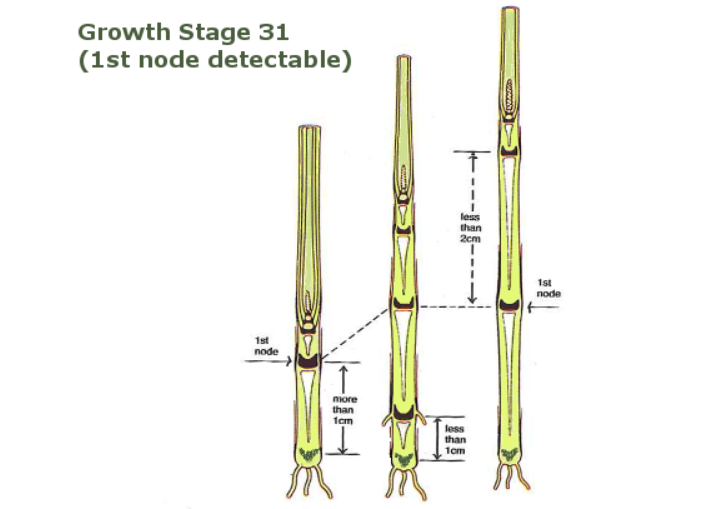There are instances of disease on winter crops across the country. It’s up to the farmer to gauge how serious this disease pressure is and think hard before going out with the sprayer too soon.
Where possible fungicide application should be delayed and applied at the standard GS30/31 timing. Weather conditions look like they could provide opportunities for spraying in the coming days.
Farmers know their crops best. If disease pressure is high it needs to be controlled. Remember the rules of integrated pest management. Sometimes a little disease is better than using more fungicide than is necessary.
Net blotch and rhynchosporium are the main threats to yield at this time of year. Rust is present on some crops and it should be controlled in time to avoid it getting a hold on crops.
A mildewcide should be added to the sprayer where the disease is present.
Identifying growth stages
GS30
At GS30, there will be 1cm between the bottom of the plant (bottom of the leaves) and the shoot apex (the top of the ear). There may be more than 1cm between the bottom of the plant and the shoot apex; but the first internode will be less than 1cm. This is shown in the picture below.
GS31
GS31 (first node detectable) occurs when the shoot apex is 2-3cm above ground level. An internode may be 1cm or more. However, the internode above it will be less than 2cm.


